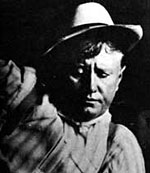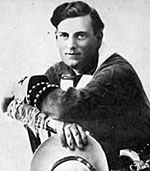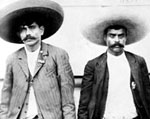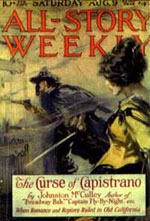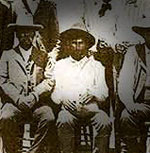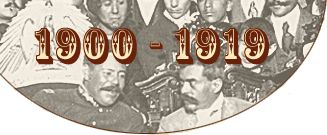

1900
Butch Cassidy meets the Sundance Kid, and the two bandits join forces in a career of robbery throughout the West. Tales about the two became pop culture legend.
1901
Gregorio Cortez kills Karnes County Sheriff W. T. "Brack" Morris after sheriff shoots Cortez 's brother. Cortez gains a reputation as a bandit and sheriff killer; evades capture for 10 days.
1904
O. Henry writes the short story "The Caballero's Way."
1907
Gilbert M. "Broncho Billy" Anderson and George K. Spoor found Essanay Studios, where Anderson writes, directs, and stars in hundreds of silent Western shorts. Broncho Billy is the first cowboy hero.
1908
Dubiously credited to D. W. Griffith, The Fight for Freedom (American Mutoscope & Biograph) is about a Mexican man and woman who end up on the wrong side of the law and pay for it.
American Mutoscope & Biograph releases The Redman and The Child, D. W. Griffith's first Western and second directorial effort. Variety magazine cheers the film's "photographic art."
1910
Mexican Revolution begins as violent social movement against dictator Porfirio Díaz. Continues into the 1920s.
1911
With U.S. support, Francisco "Pancho" Villa helps to defeat Porfirio Díaz's federal army in the Mexican Revolution. Emiliano Zapata puts forth the Plan of Ayala, calling for the return of the land to the indigenous peoples of Mexico, and the Zapatista revolution begins. Eufemio Zapata becomes a leading general for his brother.
1912
Inspired by the Mexican Revolution, Kalem Studios releases The Mexican Revolutionist, featuring a rebel named Juan as the lead and depicting only Hispanic characters.
1914
The Caballero's Way reaches movie screens (March 1914, Éclair, dir. Webster Cullison).
Pancho Villa and Emiliano Zapata hold historic meeting in Mexico City.
1915
William S. Hart directed and starred in The Grudge (New York Motion Picture Company). Hart was fiercely dedicated to portraying the frontier lifestyle as realistically as possible.
1916
Pancho Villa leads 1,500 raiders to attack residents in Columbus, New Mexico.
In The Aryan (Triangle Film Corporation), William S. Hart plays a miner who goes from good to bad and back again when he decides to leave behind his adopted life as a bandit leader and help lost settlers find their way out of the desert.
In Behind the Lines (Bluebird Photoplays, directed by Henry McRae), Edith Johnson plays a spy for the Mexican revolutionaries. This film was released only months after the U.S. army invaded northern Mexico in the hunt for Pancho Villa.
1917
Betrayed, an early Raoul Walsh film, retells O. Henry's story "The Caballero's Way" (1917, Fox, dir. Raoul Walsh).
1918
Fox Film Corp. releases The Bird of Prey, directed by Edward J. Le Saint and starring Gladys Brockwell and Herbert Heyes. In the movie a morally compromised white woman helps to defeat a gang of Mexican bandits and reinstates her honor.
1919
Emiliano Zapata is gunned down in Chinameca, Mexico.
Johnston McCulley's "The Curse of Capistrano" is published in pulp magazine All-Story Weekly, giving rise to the Zorro character. The Border Terror (Universal, dir. Harry Harvey), based on "The Caballero 's Way", is released.
Based upon the stories about Joaquín Murrieta, Scarlet Days (1919, Artcraft, produced and directed by D. W. Griffith) stars Richard Barthelmess as a good-bad desperado who comes to the aid of a compromised white woman.
The Arizona Cat Claw is released (World Film Corp., directed by William Bertram). A Mexican bandit attacks the daughter of an Arizona cattleman only to be overpowered by the independent and capable woman and later sent to jail. This was one of a group of films that depicted tough white women.
Universal releases The Border Terror, the second Cisco Kid film based on O. Henry's short story "The Caballero's Way."
